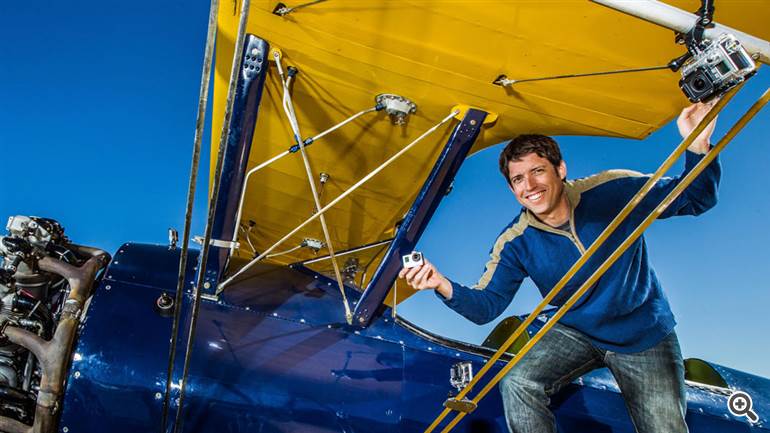GoPro camcorders can ride the waves. But can they can survive the treacherous sea of the stock market?
On Thursday, GoPro leaps into the world of public companies having sold 17.8 million shares at $24 each, at the high end of its $21 to $24 price range. That amounts to one of the largest consumer electronics IPOs ever, near Duracell’s $433 million offering in 1993. The buoyant price is based on a red hot IPO market coupled with a dearth of hardware tech companies going public.
It’s also based on an ascendant company. 2013 sales were $985 million, up 87% from the year prior. Net income also nearly doubled, from $32 million in 2012 to $61 million last year. In a Forbes magazine profile last year, GoPro founder and CEO Nicholas Woodman revealed that the company’s revenues had doubled year-over-year up to 2012. But there are some recent warning signs for potential GoPro investors. Early 2014 saw a slowdown for GoPro camcorder sales, when revenue slipped 7% and net income fell 52% from the same period in 2013.
Investors don’t seem too worried, though. At 10:50am EDT, GoPro shares opened up about 20% at nearly $28.65 per share. Shares quickly surged to nearly $32 a piece. They finished the day at $31.34, up 30.6%.
GoPro sold over 3.8 million cameras in 2013 (up 66% from the year prior), raising its cumulative sales of high definition cameras to 8.5 million since it introduced such models in 2009. GoPro’s camcorders are sold in over 100 countries, and according to the NPD Group, it was the top selling camcorder in the US last year. In fact, GoPro HERO cameras apparently represent a 45% share in dollars of the entire US camcorder industry — one that has been rapidly subsumed into mobile phones like Apple's iPhone.
However, most consumers can’t afford to attach their expensive iPhone or other smartphone to a surfboard or on the handlebar of a mountain bike. GoPro has cornered the market for extreme sport recording — and even counts professional surfer Kelly Slater among its early investors. (Slater sold 73,500 shares in the offering, recouping nearly $2 million before tax.)
The 39-year-old Woodman (his birthday was on Tuesday) first started selling GoPro cameras, originally with 35 mm film, in 2004. He became a billionaire in 2013, and he and his wife Jill owned a 49.21% stake in the company prior to the IPO. They cashed out of 3.6 million shares in the offering, netting over $86 million pretax. Their post-IPO stake just under 48% (52.4 million shares) is worth over $1.2 billion at the $24 offering price.
Other large stockholders include private equity firm Riverwood Capital (15.7% stake after the offering) and massive Chinese technology manufacturer Foxconn (10%), which bought into the company in late 2012. Woodman’s father, Dean, also owns over 6% of GoPro, having seeded the company with startup capital of $200,000. Woodman’s mother and stepfather are cashing out, but combined, the Woodman family retains majority control of the company.
In its IPO, GoPro has valued itself much higher than traditional camera makers. Cannon, for example, trades at only about 1.2 times 2013 sales and 16 times 2013 earnings. Those multiples would value GoPro at closer to $1 billion. GoPro justifies its valuation with its explosive recent growth — as well as its infant transition to becoming a content company.
If you view GoPro under the lens of a media or online tech company, like the ones with which it has signed content agreements in the past year (e.g. Microsoft and Google), the more than $2.5 billion IPO valuation makes more sense. However, the company doesn’t have any significant revenue from those projects yet.
Investors may be encouraged by deals in the consumer electronic space this year. Apple bought headphone-maker Beats Electronic for $3 billion, while Google bought smart thermostat-maker Nest for $3.2 billion and home video monitoring Dropcam for $555 million.
GoPro first announced its intentions to go public in February, then released its full S-1 last month. The company trades under the ticker GPRO.




